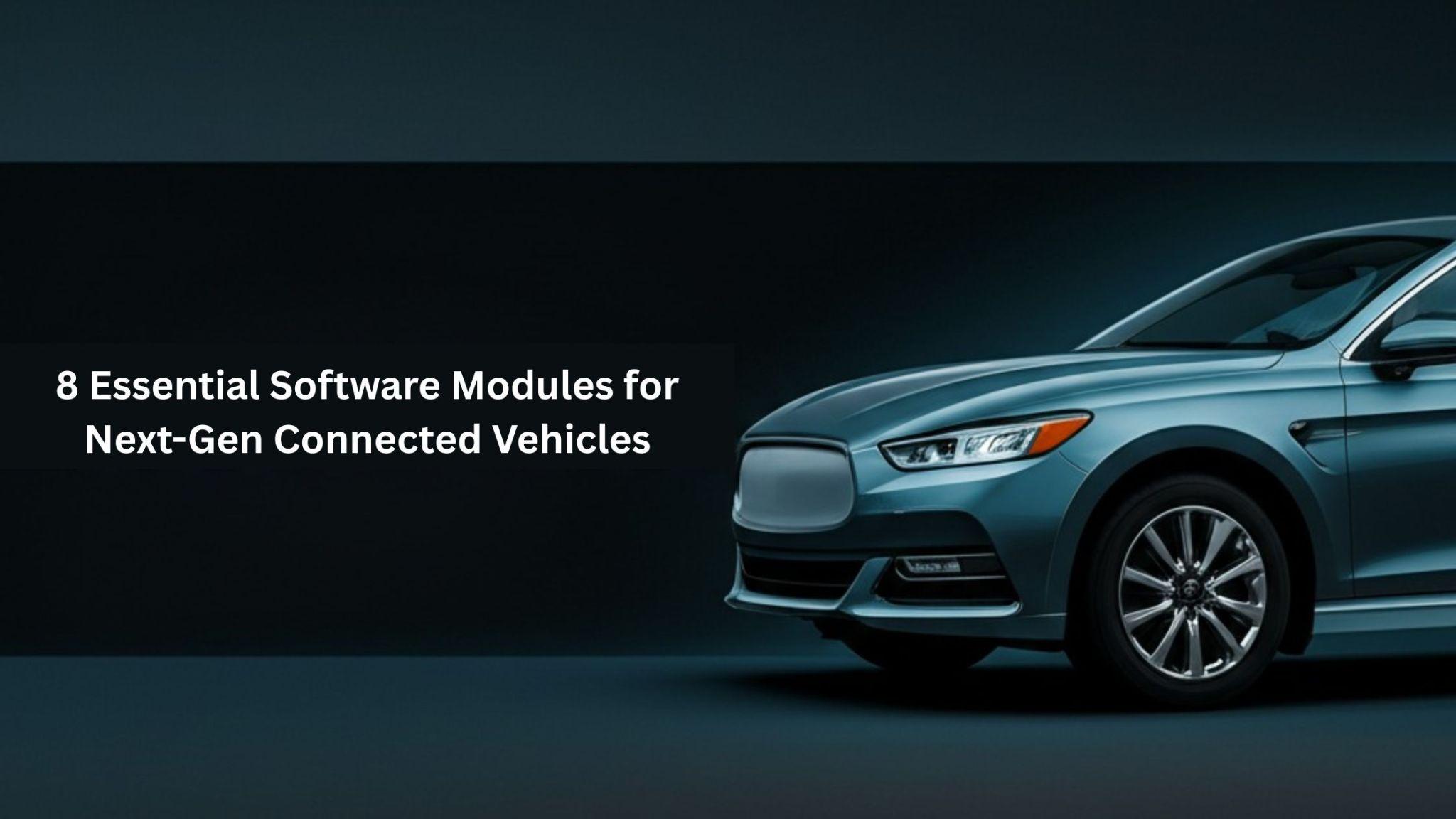Today, cars are as smart as your mobile device. You won’t believe this if this statement were stated a decade ago. But today, this is the reality, and the future holds the most prominent evolutions. The integration of next-gen software modules in the vehicles has reshaped them into innovative and more sophisticated cars.
Now, the question arises: Do we really need these next-gen cars? The answer is yes. Modern users (whether millennials or Gen Z) are more technology-focused or surrounded by it from everywhere, whether it’s their personal computers or home-specific gadgets. And if there are possibilities to improve something better and secure, they are ready to adopt it.
Modern cars are more user-focused, and with the integration of advanced technologies, this has outpaced the competition with ease. However, AI-powered automotive solutions creation requires expertise and experience. Hence, it is wise to work with the right expert for your project.
This blog highlights the essential modules of softwares that showcase how to transform next-gen connected vehicles.
8 Essential Software Modules for Future-Focused Connected Vehicle
Technology has empowered every sector, from healthcare to the automotive industry. Every quarter of the year, advanced technology continues to make its way and transform business operations. Connected vehicles were just a hype a few years back, but today, they are something automobile companies are actively investing in. The integration of essential software modules is crucial in transforming a vehicle into a next-gen model. Here are the eight important ones:
1. Advanced Driver Assistance System (ADAS)
The increasing number of vehicles and highways is making it difficult for drivers (especially new ones) to drive safely. Considering this, OEMs have initiated a step towards integrating ADAS features in modern cars. This provides real-time information, alerts, and assistance that improve driving safety. It includes features like:
- Blind-spot detection
- Lane keeping assist
- Collision avoidance
- Parking assist
As a result, these features help improve driving safety.
2. Vehicle Control System
It is essential to maintain control of your vehicle. The subtle reason lies in how the control system of your vehicle functions. The vehicle control system manages the most critical function of a car. This includes steering, acceleration, and braking, resulting in safety through real-time advanced-tech-focused monitoring. Features like cruise control, automated emergency braking, and stability control help improve the function of this feature.
3. In-vehicle Infotainment System
You are embarking on a long journey in a car with just a basic FM station and no navigation or other infotainment systems. It will be tedious, and you can get lost in the wrong location with no direction to follow. Modern-day cars are backed by in-vehicle infotainment systems that provide on-the-go entertainment, navigation, and communication services, making the driving experience more engaging and user-friendly.
4. Telematics
Today, cars are incredibly smart, thanks to the software modules integrated into them. Entertainment and vehicle control have already reshaped the automotive industry, but the integration of telematics has taken it to the next level. With features like GPS tracking, real-time vehicle location, remote diagnostics, and predictive maintenance, the driving experience and vehicle health can be improved.
5. Autonomous Driving Software
We have seen in the movies that without a driver, a car is racing on the road or track. Although it was merely a product of a writer’s imagination, today it is real. Vehicles are now fully integrated with software that enables autonomous driving, eliminating the need for human drivers. Isn’t it fascinating? AI and sensor fusion are making this happen.
6. Vehicle to Everything Communication
You may have seen sci-fi movies or animated films where vehicles communicate with other cars, pedestrians, and traffic signals. This might look funny or creative at the time, but today, this is becoming technically true. Its modern-day name is vehicle-to-everything (V2X) communication. As a result, this helps improve traffic flow and road safety.
7. Electric Powertrain Management
As an electric vehicle (EV) owner, one of the essential things to consider is checking the battery of your car. Checking here ensures it remains in good condition for optimal and efficient performance. Today, this is one of the challenging things to consider as an EV owner. Integrating an electric powertrain management system into your vehicle helps manage the battery and power distribution systems in electric vehicles (EVs). This system helps optimize a vehicle’s performance and extend its battery life.
8. Cybersecurity
Hacking or vulnerabilities are the new normal today. It doesn’t matter whether it is targeted at web-based applications or car-based systems. Hence, it is essential to keep vehicle-supported systems secure. Integrating encryption-first features, firewalls, and intrusion detection systems can help build a security-first environment.
Conclusion
This blog highlights the eight essential software modules that have transformed modern cars. The role of technology, including AI and assistive tech, is the key driver of this change in the automotive industry. Smart mobility is not a vision of the future; it’s the current norm. The eight essential automotive software development modules illustrated in this blog help build a seamless and efficient driving experience.
